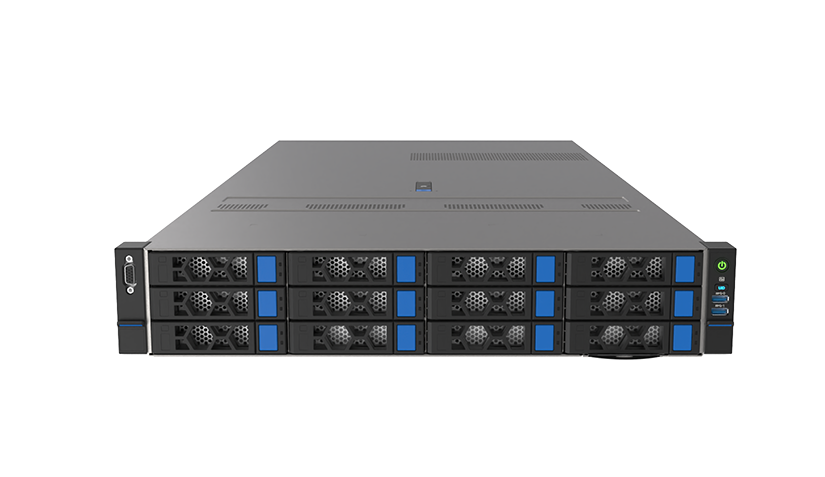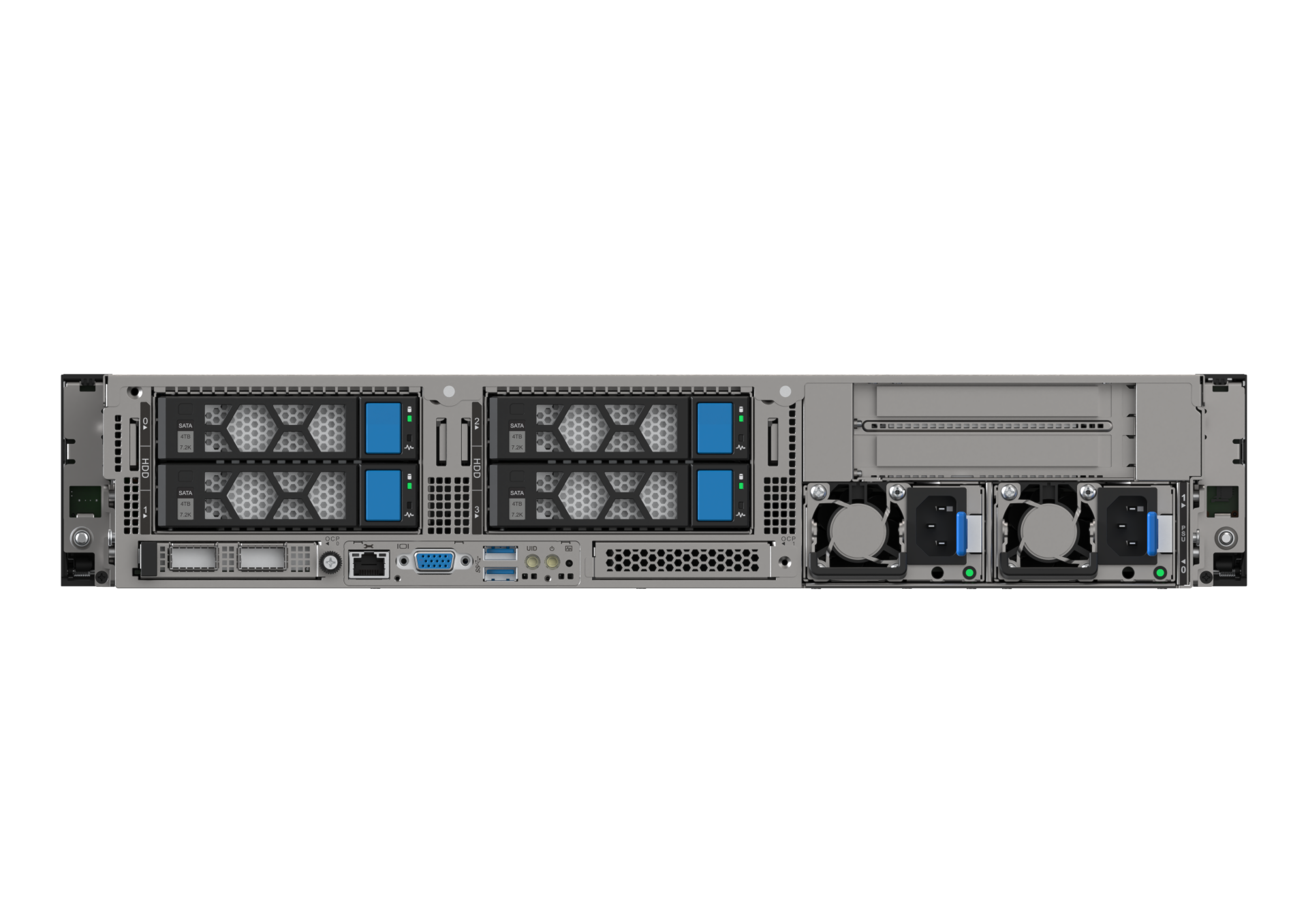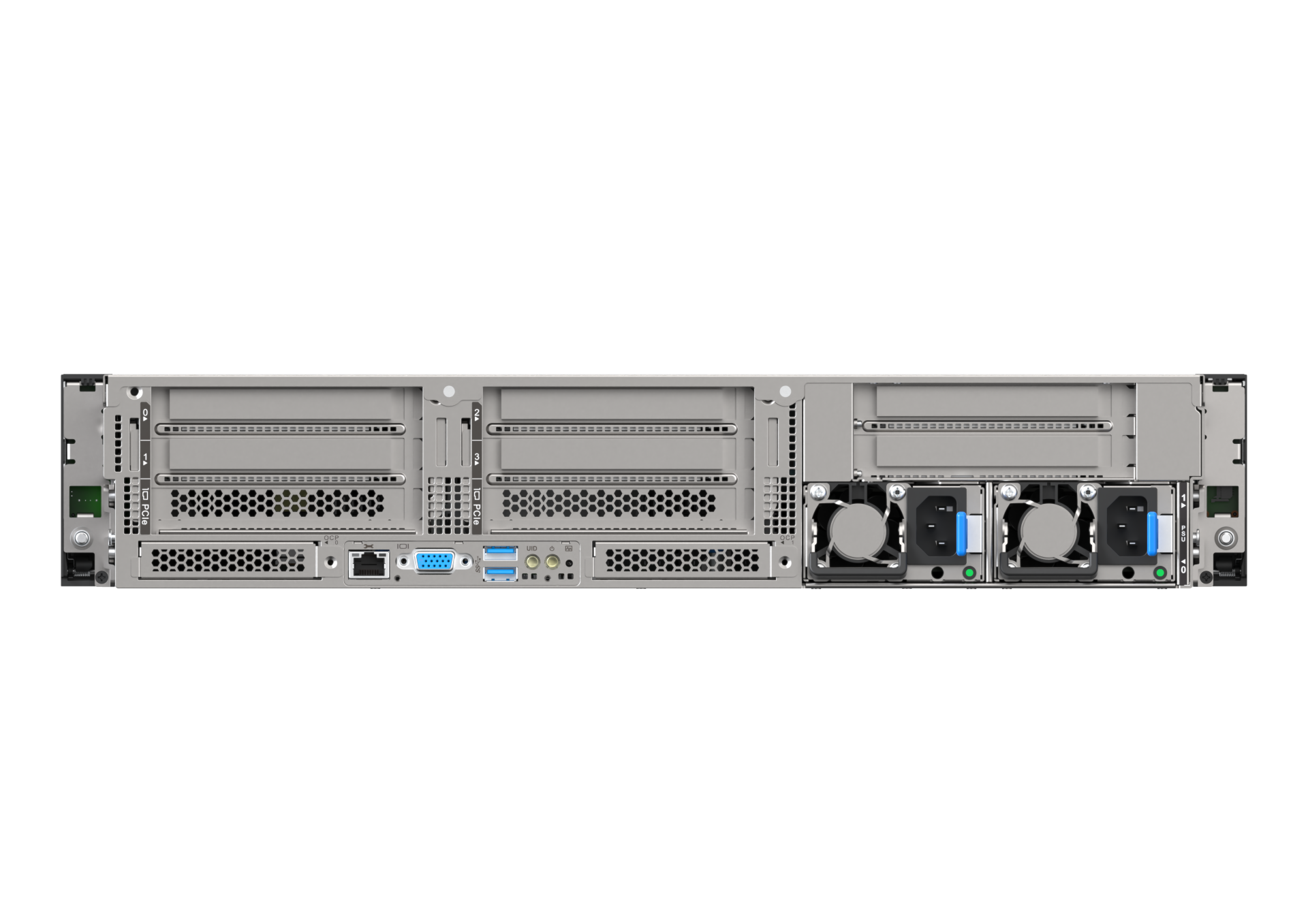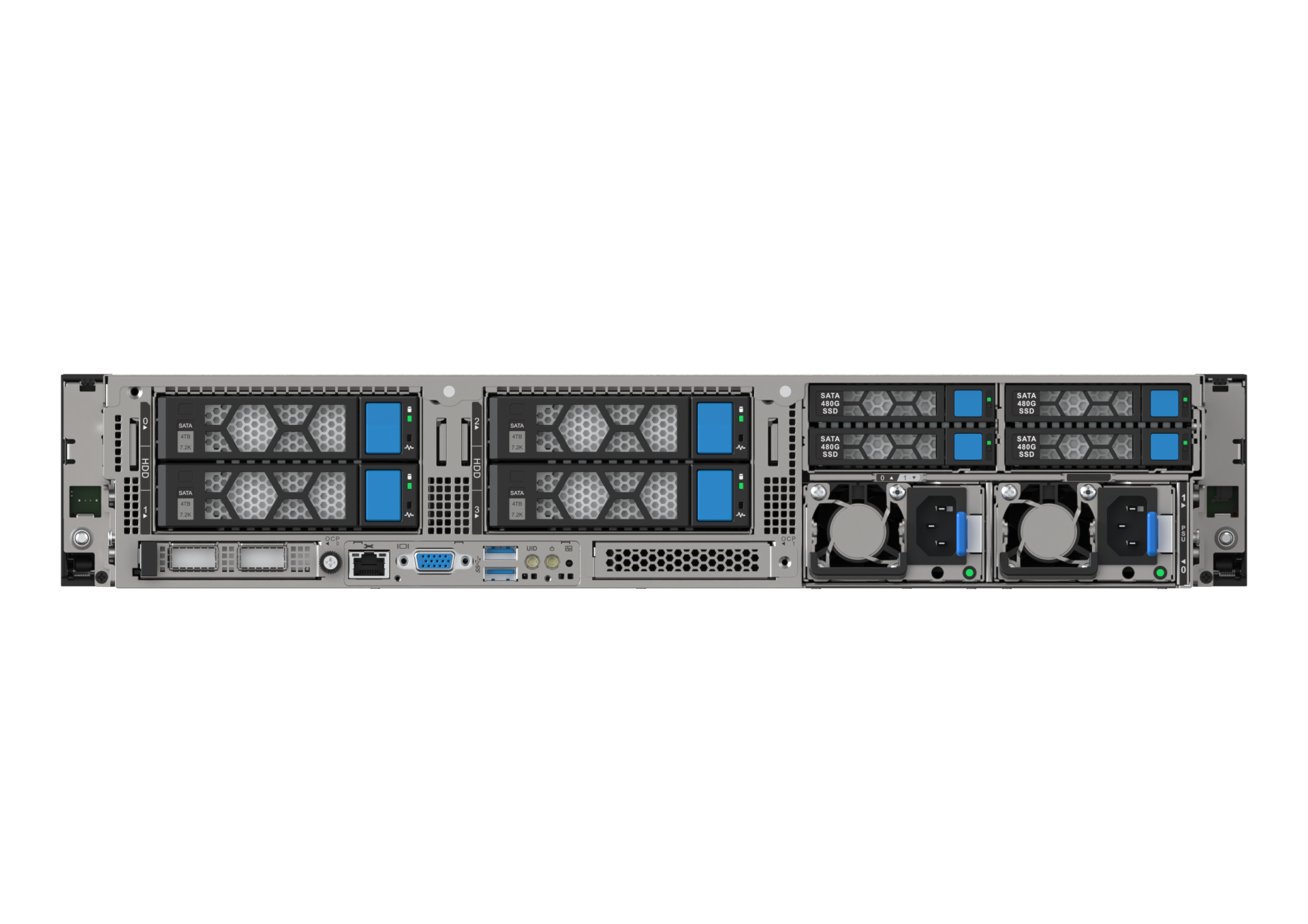C805G7
- Support 5th Gen AMD EPYC™ Processor, up to 500W
- Support DDR5 RDIMM, up to 6400 MT/s @ 1DPC
- Support 4 FHFL double slot GPU card
- Support up to 24 U.2 SSD or 16 SATA HDD
- Modular architecture to provide customers with the best performance platform
- Maximize serviceability with front IO and front node servicing

The Inventec C805G7 is purpose-built to meet the growing demands of compute-intensive AI, HPC, and data-driven applications. Designed around the 5th Gen AMD EPYC™ processors, it delivers exceptional core density, memory bandwidth, and scalability for mission-critical workloads. Whether deployed for large-scale AI model training, real-time inference, or advanced scientific simulations, the C805G7 provides the raw performance and efficiency required to accelerate innovation. Its support for up to 500 W per CPU ensures the platform can fully leverage the latest processor advancements while maintaining reliable operation under sustained heavy loads.
High-Bandwidth Architecture with Scalable Acceleration
Built on a flexible, future-ready architecture, the C805G7 maximizes data throughput with DDR5 RDIMM memory running at up to 6400 MT/s (1DPC). The system accommodates up to four FHFL double-slot GPUs, unlocking massive parallel processing capabilities for complex AI, HPC, and simulation workloads. Storage is equally adaptable, supporting up to 24 U.2 NVMe SSDs or 16 SATA HDDs, allowing configurations to be optimized for speed, capacity, or a balance of both. The default high-efficiency air cooling system ensures stable operation in most deployments, while an optional liquid cooling solution is available for customers seeking even greater thermal performance in high-density or high-power environments.
Optimized for AI, HPC, and Data-Intensive Applications
With its 2U1N (single-node) design, the C805G7 is ideal for scenarios that prioritize vertical scaling, minimizing inter-node communication overhead. This makes it a perfect fit for HPC simulations requiring large memory bandwidth, AI workloads where training and inference benefit from local resource consolidation, and high-performance databases that demand rapid, in-node data processing. By combining cutting-edge processor performance with advanced GPU acceleration, flexible storage, and versatile cooling options, the C805G7 empowers organizations to push the boundaries of what is possible in AI and HPC computing.
W x H x D: 447.6x87x 850 mm
(17.63x 3.43x 33.46inch)
Support for 2-,4-,6-,8-,10-,12-channel memory
interleaving RDIMM, 3DS RDIMM
Front :
Config 1 : 16x3.5”HDD+2xFHHL PCIe Card Config
2 : 12x3.5”HDD+6xFHHL PCIe Card
Config 3 : 16x3.5”HDD+4x2.5”HDD
Config 4 : 8x3.5”HDD+4xDW GPU+DW PCIe Card
Config 5 : 24x2.5”HDD+2xFHHL PCIe Card
Config 5(Front IO) :18x2.5”HDD + 3xFHHL PCIe Card
Internal
Support 1x22110/2280 M.2 for boot device
OCP 3.0, 10M/100M/1G Ethernet MAC controller
with one fan rotor fail condition



